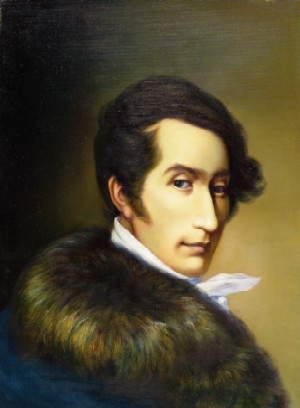Carl Maria von Weber.
https://en.wikipedia.org/wiki/Carl_Maria_von_Weber
Welcome, this is Terry Ewell.
In order to succeed with this composition, the performer must perform with great enthusiasm, color, and virtuosity. This is not a subtle composition, painted as it were in pastels; rather the colors are bold and adverturesome. The performer needs to express passion, bravado, and even humor.
For instance, the opening Rondo statement should be played with character. Staccato notes should be short, bringing out the wonderful snap that is so characteristic of articulation on the bassoon. Also dwell on the first of the sixteenth notes slightly. Don’t play even sixteenths. Be sure to play the 32nds as late and as quickly as possible. This also underscores the virtuosity of the performance.
Dynamic indications in the work are few. Weber indicates several forte dynamics and some fortissimo dynamics. However, not a single piano, mp, mf is included in the composition. Definitely you should add some other dynamics. Sections marked cantabile in the Andante and the Rondo should be played at quieter dynamics.
I also like to make dynamic contrast between measures 108-109 and measures 112. I perform the first measure at piano or mp. Then the second group of measures forte. This brings out the humor in this portion of the composition.
There should be rubato in the composition to indicate the return of sections of the Rondo form and to add “Gypsy” flair. For instance, I signal the return of the Rondo theme in orchestra by slowing down in measure 21; likewise in measure 172. The lead-in in measures 221-222 provided by Weber serves as a little cadenza. Take time in measures 220 and 221. Then accelerate back to tempo in measure 223. The orchestra should also take time in measure 258 to set up the last return of the Rondo them and measure 277 to make the coda seem all the more brilliant.
There are two places in the composition that I depart from Weber’s markings. In measures 166-167, I view slurs as phrase markings rather than an absence of tonguing. I tongue all of the accented notes to emphasize them better. In measure 173, Weber indicates a trill from Ab2 to B2. I think that this is a misprint. The first trill should be from Ab2 to Bb2, the second trill from G2 to Ab2.
Quick articulation is a requirement for the end of the Rondo. Let me point you to some resources that I have created that will help you develop different tonguing strokes. Website information on double tonguing. http://www.2reed.net/bdp/ I have several videos and practice aids available on 2reed.net in the Bassoon Digital Professor website. There are links at the top of the page for double tonguing and triple tonguing.
Let’s select the link for triple tonguing. I have created a separate video on triple tonguing. On the website is a pdf document with exercises and excerpts. I am not going to present that here again, please review the video on Triple Tonguing, BDP # 191. I will, however, state here that the sound of triple tonguing is not the same of double tonguing imposed over triplets. I strongly advocate that you learn to triple tongue so that you can best present this passage and the other excerpts I discuss in the triple tonguing video.
Now let’s discuss the tonguing strokes and slurs I use in the passage. In the first video in the series, General Observations BPD #189, I mentioned several Hungarian gestures that were employed in this movement. Of all of the gestures, the spondee informs my articulations the most. Here is the example of a spondee given by Dr. Kritzer and the next example of repetitions of spondees appearing early in the Rondo. Furthermore, I find spondees in the triple tonguing section of the Rondo and this further influences my articulation. The leaps on strong beats, often octaves, call for upward slurs. Given these slurs I furthermore add some slurs on other strong beats. I prefer to keep the scalar passages all tongued. I think that is sounds more virtuosic that way. However, it is quite reasonable to keep the two slurred and then T T K T pattern going throughout much of the excerpt even through the scales.
I break with the use of the triple tongue in two sections, both in the lower register. Please see the notes in the blue boxes. I find it easier to single tongue at the ends of these runs. There are times when you will need to use double or triple tongue in the low register such as in the Jolivet Bassoon Concerto, but this is rather uncommon.
When I performed the composition in 1984, I used the Kalmus edition that has triplet sixteenths throughout all of m. 284. The added notes mimicked what was in the viola edition. I now take the rest there as given in the original. With age I don’t have the same lung capacity so I must be less ambitious.
I am sure that there are some that will be asking me to make the entire performance of the television broadcast available. Indeed, I did this for about half a year around 2007. However, the television station would only give me permission to keep it on the World Wide Web for just a few months. So I am just featuring portions of the performance in these videos.
Well, I hope that these three videos have helped you in your study of the
Weber Andante and Hungarian Rondo. I am praying for God’s blessing in your life
as you study of the bassoon. God bless you! Bye.
Copyright (c) 2016 by Terry B. Ewell. All rights reserved.
